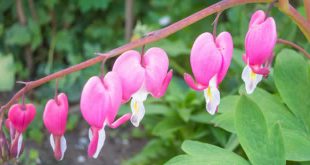 Loosestrife — Lythrum salicaria (Purple-loosestrife) is a flowering plant belonging to the family Lythraceae, native to Europe, Asia, northwest Africa, and southeastern Australia. The name is commonly cited unhyphenated as purple loosestrife, but it should not be confused with other plants sharing the name loosestrife that are members of the family Primulaceae. Other names include spiked loosestrife, or purple lythrum; in French it is salicaire.
Loosestrife — Lythrum salicaria (Purple-loosestrife) is a flowering plant belonging to the family Lythraceae, native to Europe, Asia, northwest Africa, and southeastern Australia. The name is commonly cited unhyphenated as purple loosestrife, but it should not be confused with other plants sharing the name loosestrife that are members of the family Primulaceae. Other names include spiked loosestrife, or purple lythrum; in French it is salicaire.
It is a herbaceous perennial plant, growing 1-1.5 m tall, forming clonal colonies 1.5 m or more in width with numerous erect stems growing from a single woody root mass. The stems are reddish-purple or red to purple and square in cross-section. The leaves are lanceolate, 3-10 cm long and 5-15 mm broad, downy and sessile, and arranged opposite or in whorls of three. The flowers are reddish purple, 10-20 mm diameter, with six petals (occasionally five) and 12 stamens, and are clustered tightly in the axils of bracts or leaves; there are three different flower types, with the stamens and style of different lengths, short, medium or long; each flower type can only be pollinated by one of the other types, not the same type, thus ensuring cross-pollination between different plants. The fruit is a small 3-4 mm capsule containing numerous minute seeds. Flowering lasts throughout the summer. When the seeds are mature, the leaves often turn bright red through dehydration in early autumn; the red colour may last for almost two weeks. The dead stalks from previous growing seasons are brown.
The species is very variable in leaf shape and degree of hariness, and a number of subspecies and varieties have been described, but it is now generally regarded as monotypic with none of these variants being considered of botanical significance. The species Lythrum intermedium Ledeb. ex Colla is also now considered synonymous.
 Kids Portal For Parents India Kids Network
Kids Portal For Parents India Kids Network




